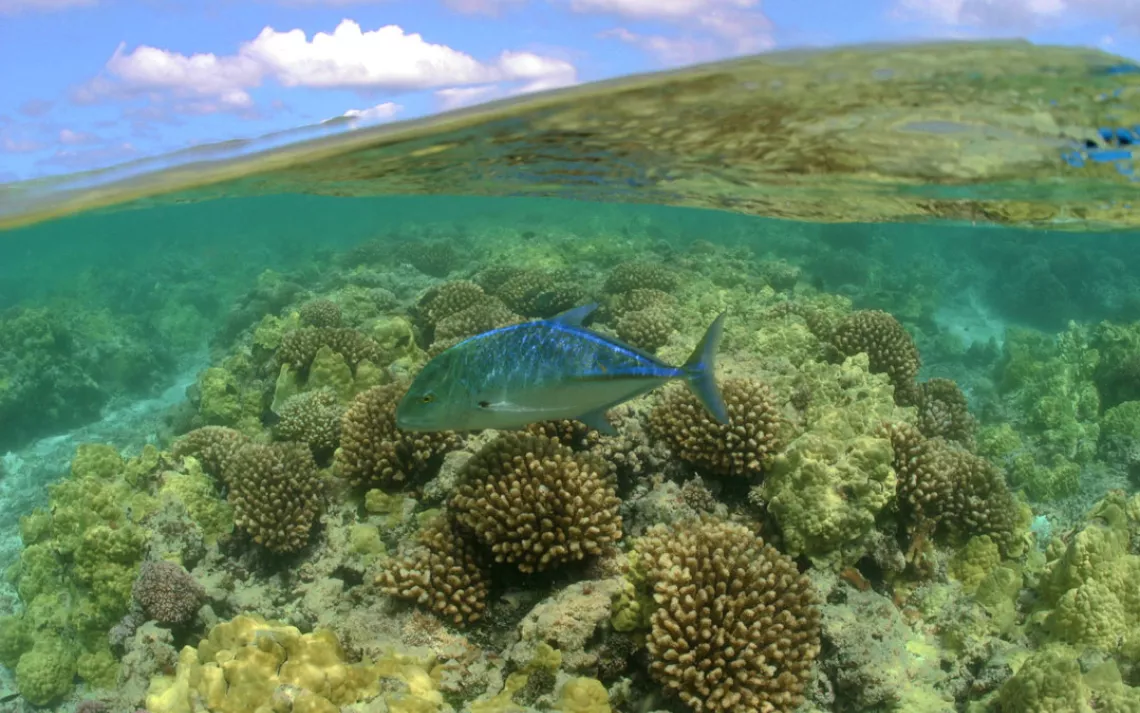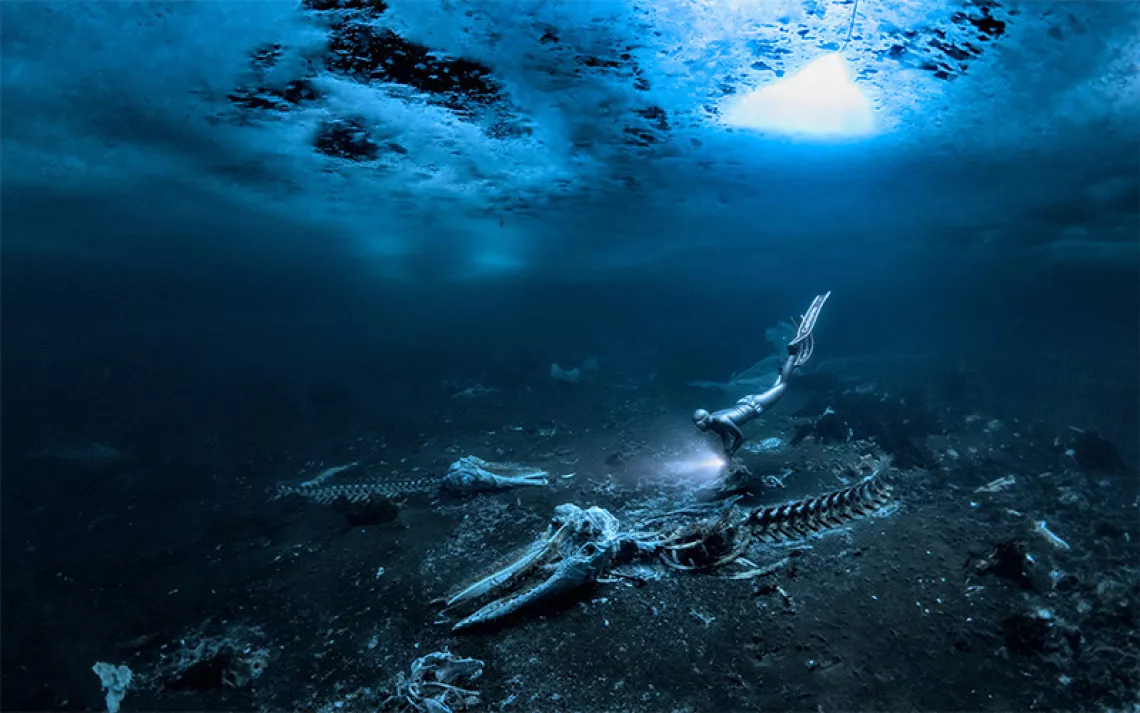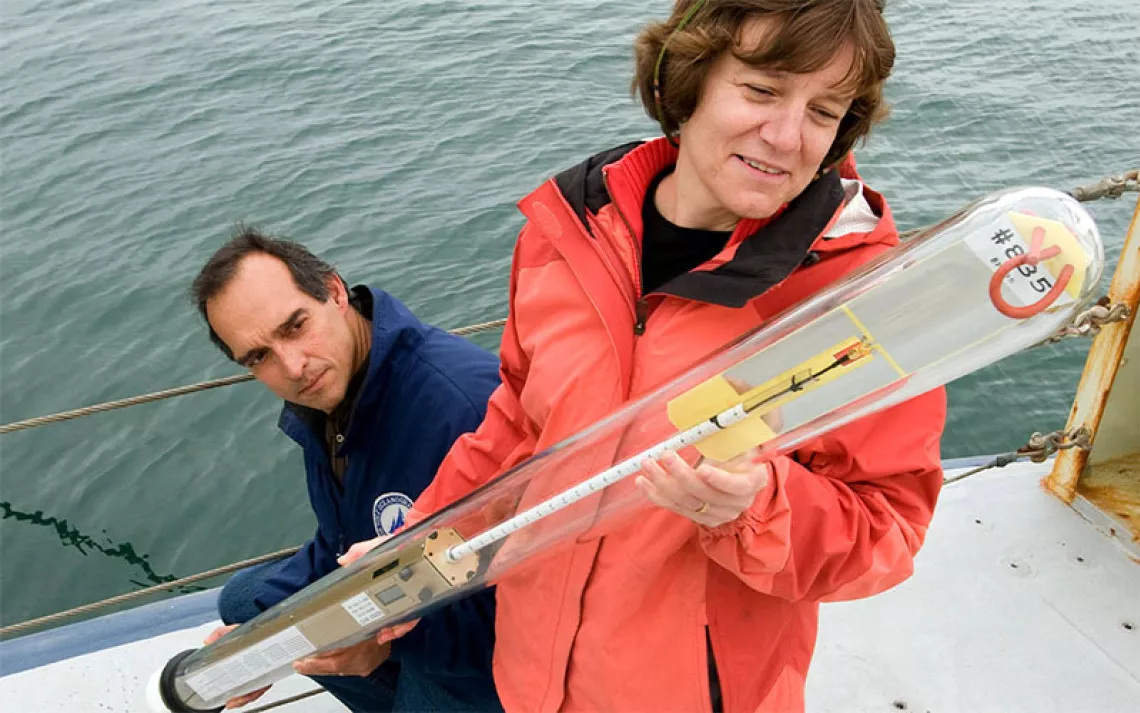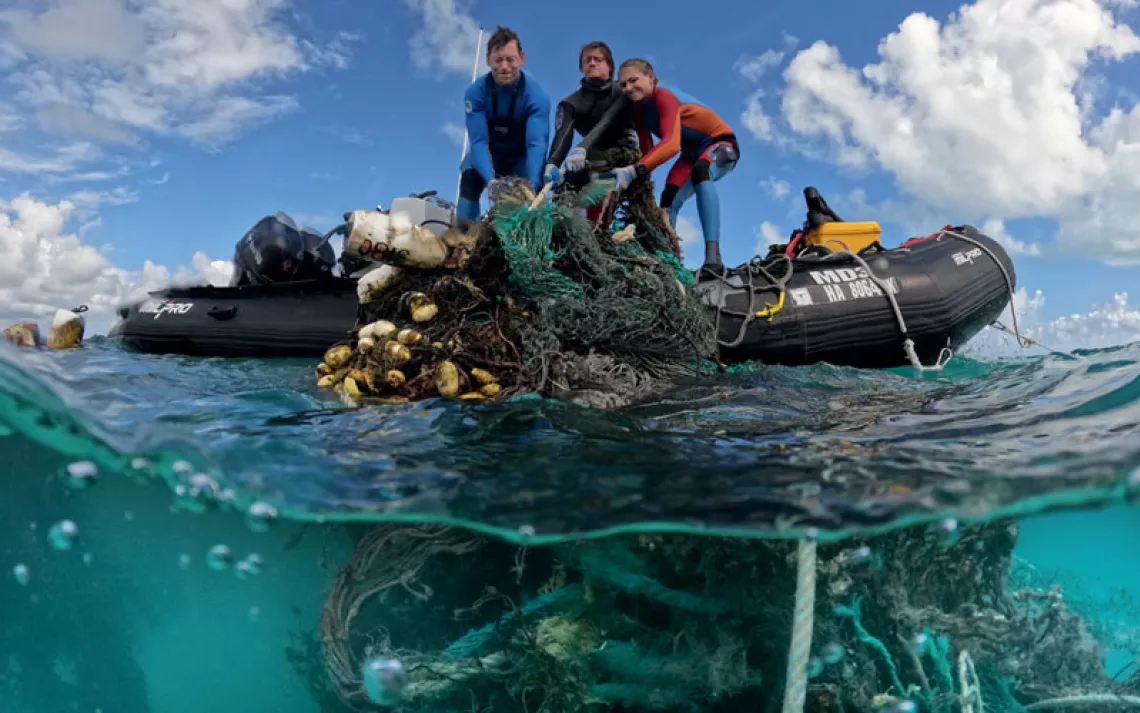President Obama Creates the Largest Protected Area in the World
With the expansion of the Papahānaumokuākea Marine National Monument, President Obama further strengthens his environmental legacy

Bluefin Trevally in Papahānaumokuākea Marine National Monument. | Photo by James Watt
In another big move during the week of the National Park Service centennial, this morning President Obama created the largest protected area on Earth by expanding the Papahānaumokuākea Marine National Monument off Hawaii to 582, 578 square miles. The expansion more than quadruples the area of the national monument, which is now protected from commercial fishing and mineral extraction. The waters and the islands of the national monument are an important part of Hawaiian culture and home to a variety of species, ranging from threatened green sea turtles to endangered Hawaiian monk seals to long-lived black coral.
“The Northwestern Hawaiian Islands are home to one of the most diverse and threatened ecosystems on the planet and a sacred place for the Native Hawaiian community,” Secretary Jewell said in a statement. “President Obama’s expansion of the Papahānaumokuākea Marine National Monument will permanently protect pristine coral reefs, deep sea marine habitats and important cultural and historic resources for the benefit of current and future generations.”
President George W. Bush first proclaimed the area a national monument in 2006. It was designated a UNESCO World Heritage Site in 2010.
In a letter to President Obama this June, Hawaiian Senator Brian Schatz formally proposed the expansion. He applauded today’s decision. “This is one of the most important actions an American president has ever taken for the health of the oceans,” said Schatz in a statement. “Expanding Papahānaumokuākea will replenish stocks of ‘ahi, promote biodiversity, fight climate change, and give a greater voice to Native Hawaiians in managing this resource.”
The Office of Hawaiian Affairs will have a part in managing the expanded refuge, according to the Departemnt of the Interior. While commercial fishing is banned, recreational fishing and removal of fish and other resources for Native Hawaiian cultural practices will be allowed.
Not everyone supported the decision. News agencies, including the Washington Post and Reuters, reported that longline fishermen were upset with the new designation. “Excluding American citizens from American waters and forcing in this case fishermen onto the high seas to do their business—something just doesn’t quite sit right,” said Sean Martin, president of the Hawaii Longline Association.
The islands and dynamic reef system of the national monument support more than 7,000 species, of which more than a quarter are unique to the Hawaiian Islands. Giant seabirds, like the Laysan albatross, nest on the islands and feed offshore in deeper waters. Hawaiian green sea turtles forage on seagrass and algae in near shore waters and nest on the small islands. Black coral, the longest living marine species in the world at ages of more than 4,500 years old, grow offshore in deep waters.
President Obama will visit the monument on Thursday when he travels to Midway Atoll. In this, his latest move, he has further protected more land and water than any other administration in history. Under the 1906 Antiquities Act he has now set aside more than 548 million acres of land and water.
“As we mark the 100th anniversary of America's National Park Service this week, there's no better time for such a bold move in ocean conservation,” Sarah Chasis, director of the Oceans program at the Natural Resources Defense Council, said in a statement. “This act—to build resilience in our oceans, and sustain the diversity and productivity of sea life—could usher in a new century of conservation for our most special, and fragile, ocean areas.”
 The Magazine of The Sierra Club
The Magazine of The Sierra Club







